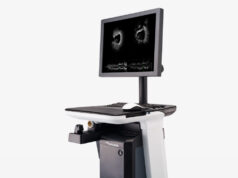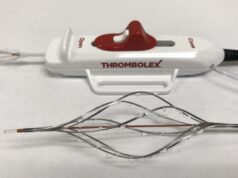
In order to fully capitalise on the potential of advances in materials, drugs, biologics, sensing, informatics, guidance, manufacturing processes and marketing, an organised collaborative approach to innovation is required, writes John Kaufman.
Innovation in image-guided intervention must change and evolve just as the specialties that perform these procedures change. The targets of innovation, the substrates that we work with, and how we innovate cannot remain static. We are on the brink of potentially the most exciting and transformative period since the days of Charles Dotter. As a major stakeholder in image-guided interventions, interventional radiology should embrace with enthusiasm these changes.
For over 50 years image-guided interventions have focused on substituting percutaneous procedures for existing, more morbid open surgeries. For example, endoluminal revascularisation instead of open bypass, embolization of gastrointestinal bleeding instead of bowel resection, percutaneous drainage instead of incision, and vena cava filters instead of surgical ligation. This has been extremely beneficial for patients, and we have not yet exhausted the possibilities of this approach. We continue to develop exciting new procedures, such as branched endografts and percutaneous heart valves.
Though very successful, this approach is somewhat unidimensional: if it is blocked, we find a way to open it; if it is leaking, we try to plug or patch it; if it is too big, we make it smaller, and vice versa. In addition, this has focused innovation on creating structural solutions for structural problems. We look at how something is done surgically, and try to figure out a way to do it with catheters and image-guidance.
There are notable exceptions to this trend, such as image-guided cancer treatments and drug-device combinations for atherosclerosis. Many of these interventions are really a means of delivering a therapeutic agent to a tumour or diseased artery. We are becoming as concerned about understanding the biology of the lesion as its blood supply. This direction—melding drugs and biologics with devices and image-guided delivery has enormous potential to treat both the structural problem and the underlying local pathology. In as sense, this adds another, second dimension to the intervention: adding therapy to devices that modify structure.
Biosensing and informatics have enormous potential to revolutionise what we do. For example, the follow-up of most interventions is episodic clinical or imaging visits. The true moment-to-moment impact of interventions is very hard to understand, let alone monitor. Biosensors included on devices could measure haemodynamics, electrical activity, the presence of proteins, glucose levels, or drug levels. Devices that combine sensors, or just the implantation of sensors that are online all the time could provide information that completely disrupts many of our most cherished beliefs about human physiology and disease. In addition, if this information can be delivered in an easily accessed and comprehensible format to patients, their behaviour may be influenced in the same positive way as by wearable sensing technologies. This adds a third dimension to devices, that of information.
The next step will be smart devices: devices that not only monitor, but can deliver therapeutics or electrical impulses on command or automatically in response to changing conditions. Smart devices will add a fourth dimension to interventions that may allow us to fundamentally change the targets of our procedures.
In the past, present, and near future, image-guided interventions have and will predominantly be aimed at treating existing disease. We have been more like surgery and responded with structural solutions to established pathologies, rather than like medicine, trying to prevent disease. Devices that can sense changes in the local environment and deliver a medication in response could shift our focus from lesions to prevention of complications of systemic disease. The paradigm of image-guided interventions would be completely upended, and our geographic location within the value stream of healthcare moved from the tail to the front end.
The basic materials with which we innovate are very limiting. There are relatively few materials that are safe to use in all people, and these have a limited range of properties and configurations. The more that we understand the interaction between materials and people, the greater the likelihood that we can expand our range of options. Genomics and proteomics are two fields that have great bearing on innovation in image-guided interventions. In the same way that each individual’s response to a medication is governed by their unique DNA and proteomes, it is likely that this is also true for the materials that we use for our devices. Imagine a world in which in your interventional suite you can digitally print a sterile device using patient specific imaging and genomic/proteomic data that is constructed from a material and loaded with a tailored drug and dose that you know are compatible with and appropriate for your patient and their condition.
Interventional imaging is no longer just about harnessing energy to portray anatomy and visualise devices, but involves guidance and navigation. Fusion of three-dimensional CT reconstructions and live fluoroscopy, already a robust clinical reality, is just the beginning. We will someday have simultaneous multimodality imaging, integrated global positioning system (GPS)-like navigation, and continuous biosensing interfacing with robotics and smart nanodevices that can sample and treat as they are advanced through the body. We need to work with our manufacturing partners to create guidance systems for intervention rather than just imaging solutions.
Lastly, how we innovate must change dramatically. Charles Dotter created many of his prototype devices by himself, using his workshop lathe and drill press. This was appropriate for the times and scope of innovation, but will not work today. In order to fully capitalise on the potential of advances in materials, drugs, biologics, sensing, informatics, guidance, manufacturing processes and marketing, an organised collaborative approach to innovation is required. The importance and fundamental role of that initial spark of creativity or intuition is undiminished, but the talents of a broad coalition are necessary to reach fruition. This means collaboration across specialties and across professions, between institutions, with patients, with industry and with government. The knowledge base and skill set needed for creating multidimensional devices and interventions of the future are too large for any one person, specialty, or interest group. The more that we can make collaboration an integral part of the culture of image-guided intervention, the more we will be able to achieve.
Interventional radiology has been one of the great engines of innovation and disruption in medicine for half a century. As a result, a lot has changed in image-guided intervention over that time, including what can be done, how it is done, and who does it. It can remain one of the great engines by embracing change in how we innovate as vigorously as we adopt new procedures and practices. Resistance to change has no future.
John Kaufman is director, Dotter Interventional Institute, and Frederick S Keller professor of Interventional Radiology, Oregon Health & Science University Hospital, Portland, USA










